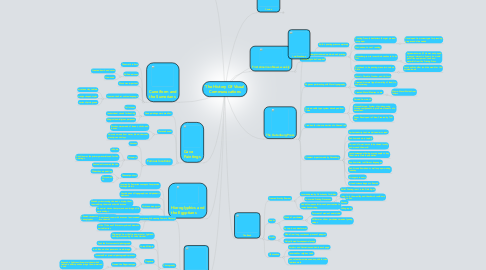
1. Cave Paintings
1.1. Cave paintings were used for:
1.1.1. Tell stories
1.1.2. Instructional visuals for hunting
1.1.3. Magical and religious purposes
1.2. Materials used:
1.2.1. Brushes were made of stones, sticks, and leaves
1.2.2. Paint was made from water, blood, charcoal, plant juice and clays
1.3. Famous locations:
1.3.1. Lascaux
1.3.2. Altamaira
1.3.2.1. In Spain
1.3.2.2. Red clay was the primary material used for the paintings
1.3.2.3. Sautoula discovered the site
1.3.3. Chauvetpont'arc
1.3.3.1. Oldest known painting
1.3.3.2. Discovered by
2. Cuneiform and the Sumerians
2.1. Theocratic culture
2.2. Skilled artisans
2.2.1. Created bowls and vases
2.2.2. New node
2.3. Music was important
2.4. Created the first written language
2.4.1. wrote on clay tablets
2.4.2. wedge shaped stylus
2.4.3. series of pictograms
3. Hieroglyphics and the Egyptians
3.1. Inspired by Sumerian concept of expression through words
3.2. Combination of logographic and alphabetic elements
3.3. Written on papyrus
3.3.1. Made by crisscrossing the reeds, drying them, then rubbing them smooth with a stone
3.3.2. Wrote about Religion and government
3.4. Also wrote on temples and pyramids
3.4.1. Showed respect to cover the walls with heiroglyphics
4. History of Photography
4.1. 4th century Camera Obscura
4.1.1. An optical device that projects and image of its surroundings
4.1.2. A darkened room with a convex lens inserted into the wall
4.1.3. In the 17tha and 18th century shrunk down to portable sizes
4.2. Photography
4.2.1. Originated from the Greek words for light and writing; first used by Sir John Hershel.
4.2.2. Joseph Niepce
4.2.2.1. Took the first successful photograph
4.2.2.2. took 8 hours of exposure to create image
4.2.3. Daguerre
4.2.3.1. Invented first practical photographic process
4.2.3.2. Named the Dagurreotype
4.2.3.2.1. Exposed a light sensitive metal sheet which created a direct positive image then immersed in salt
4.2.4. Calotype Process
4.2.4.1. William Fox Talbot
4.2.4.2. Subject was exposed onto a light sensitive paper producing a paper negative
4.2.5. Sir John Hershel
4.2.5.1. Created the word "photography"
4.2.5.2. derived from the Greek word for light and writing
4.3. Who invented the first practical photographic process? Daguerre What is the name of that process? Daguerreotype
5. History of Computers
5.1. Konrad Zuse
5.1.1. Invented the first freely programmed computer
5.2. Howard Aiken and Grace Hopper
5.2.1. Invented the Mark series of computers
5.2.1.1. Created for the US Navy for gunnery and ballistic calculations
5.3. John Preseper Eckert and John Mauchly
5.3.1. Designed first commercial computer
5.3.1.1. UNIVAC
5.3.1.1.1. Universal Automatic Computer
5.4. IBM
5.4.1. International Business Machine
5.4.2. Developed First high level programming language
5.4.2.1. FORTRAN
6. The Book
6.1. Created first by Romans
6.1.1. Later adopted by Christianity for bibles
6.1.1.1. Became an art in the Dark Ages
6.1.1.2. Only the wealthy and the church could own books
6.1.2. Added lowercase letters and punctuation to roman handwriting
6.2. Books
6.2.1. Made of parchment
6.2.1.1. Parment of made of animal skin
6.2.1.2. Vellum was a finer parchment made of young calves
6.2.2. Set up in a codex format
6.3. Scrolls
6.3.1. Made from long continuous pieces of papyrus
6.3.2. Only allowed for sequential usage
6.4. Illumination
6.4.1. borders and illustrations added to each page
6.4.2. reserved for religious texts
6.4.3. goose feathers were used as quills for the intricate work
7. The Gutenberg Press
7.1. Gutenberg Introduced modern book printing
7.1.1. Printing Press: Inked letters that get pressed into paper
7.1.1.1. Developed from screw type for pressing grapes and olive seeds
7.1.2. Motivation: Love of reading
7.1.3. Gutenberg saw to invest his invention to John Fust
7.1.3.1. Agreement was: if Fust was not payed re-payed interest in 5 years, he would get all the equipment, tools and materials from the Printing Press
7.1.4. First book to be printing was a two volume Bible
7.1.4.1. Fust and Schoeffer took the credit for the printed book
7.2. Began experimenting with Metal typography
7.2.1. Metal = Durable, Quicker, and Uniform
7.2.2. Created his metal type from alloy of lead, tin, and antimony.
7.2.3. Created Metal Matrices to use
7.2.3.1. Matrix: Metal Molds from letters
7.3. First movable type system developed from China
7.3.1. Carved from wood
7.3.2. Moveable type: System of printing using moving components to produce elements of a document.
7.3.3. Paper Developed in China; Created by Ts'ai Lun
7.4. Credited for the introduction of oil based ink
7.5. Greatest impacts made by Gutenberg
7.5.1. Perfected script and made it easier to read
7.5.2. Books made more tapidly
7.5.3. Current information could be shared locally and around the world
7.5.4. cost decreased allowing more people to buy them; more literate population
7.5.5. Books written in different languages
7.5.6. Book trade flourished as well as paper making industry
7.5.7. Stronger economy
7.5.8. art and science began to flourish
7.6. Four main Printing Processes
7.6.1. Relief Printing
7.6.2. Intaglio
7.6.3. Porous
7.6.4. Lithography
